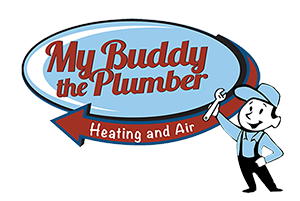What HVAC Efficiency Ratings Are Telling You
If you’re considering purchasing a new heating or cooling system for your home or building, efficiency is likely one of the top priorities on your list. There are several factors that speak to the efficiency of a given piece of HVAC equipment, and one of the most important is the efficiency rating offered by the manufacturer – but there are a few different ratings used here depending on the equipment you’re buying.
At My Buddy the Plumber, we offer both AC and furnace installation from a variety of manufacturers. What are the common efficiency ratings you might deal with when purchasing our new systems, and what do they mean? Here’s a general primer.
SEER Rating
When it comes to cooling, SEER rating – short for Seasonal Energy Efficiency Ratio – is generally the first rating used. It’s meant to measure the amount of cooling the system is providing compared to the electricity that’s being used to create this cooling.
Generally speaking, SEER ratings range between 10.9 and 23 (mini-splits and ductless systems may go higher). They are calculated by taking the entire cooling output put out during a cooling season, then dividing that number by the total electric energy used during the same time period. The higher the SEER number, the more efficient the AC unit will be.
EER and IEER
There are a couple offshoots of the SEER rating that are not used as often, but are worth mentioning:
- EER: As you may have guessed based on the one letter missing, EER ratings are similar to SEER, but do not use a seasonal factor – rather, they just use a single outdoor and indoor temperature number for their calculations. This means they are more general, often used for smaller spaces.
- IEER: IEER ratings are generally used for split-system air conditioners that require multiple air handlers.
AFUE
Switching to the heating end, AFUE stands for Annual Fuel Utilization Efficiency – it speaks to the efficiency of a furnace or a boiler system. It tracks the amount of fuel used when the unit is working, then converts that number into a percentage representing how much is used directly on heating compared to how much is wasted.
So for instance, a furnace or boiler with a 95 AFUE number uses 95% of its fuel on heating purposes, with just 5% waste. The higher the AFUE number, the greater the efficiency.
HSPF
Another heating rating that’s seen less often is HSPF, which is only used for heat pumps. It stands for Heating Seasonal Performance Factor, calculated by dividing heating input by overall electricity used by the pump. Ratings for HSPF range as high as 10, with higher once again meaning better.
For more on the energy efficiency ratings you might encounter when purchasing a new heating or cooling system, or to learn about any of our plumbing or HVAC services, speak to the staff at My Buddy the Plumber today.

